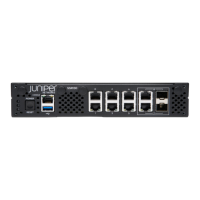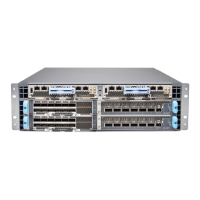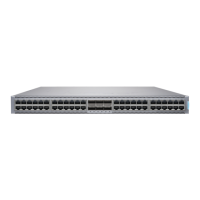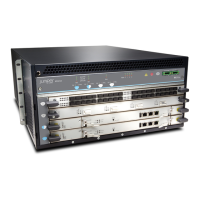The front panel comprises the following components (see Figure 2 on page 3):
•
Interface module—Frame processing and forwarding engines.
•
Processor module—Two slots are available on this module for an optional fiber Gigabit Ethernet or Fast
Ethernet PMC module. The primary SC connector is on the left side. For more information about the
PMC module, see “CTP2000 PMC Module” on page 30 and “Installing a PMC on CTP2000 Platforms”
on page 99.
•
Power supply extractor—Push the button to eject the power supply module.
The rear panel (RTM) comprises the following components (see Figure 3 on page 4 and
Figure 4 on page 5):
•
Clock module—Provides clock distribution between modules when the backplane is in use by voice
applications.
•
Power supply—Use a standard IEC power cord for the AC version. Use a 22-AWG fork terminal connector
for the DC version. There is no power redundancy for the AC version and the DC version.
There are no power switches on CTP2000 Series DC models, so a readily accessible disconnect device
must be provided as part of the electrical installation of the unit. We recommend the 22-AWG wire for
DC power terminals.
•
Ethernet connection—Provides the 1-Gbps Ethernet connection to the IP network by means of a local
Ethernet switch or router.
•
Console connection—Provides an asynchronous tty connection for locally configuring the CTP Series
device. On the PP310 and PP332 processors, you can connect a console directly to the COM2 port
(which is an RJ-45 type connector) found on the RTM panel.
Figure 3: CTP2008 Platform Containing the PP332 Processor (AC Version, Rear View)
ETH1 USBConsole
Power input and switch
COM2 COM3
PMC I/O 1
PMC I/O 2
Not used Not used
Not used ETH0
g015353
4

